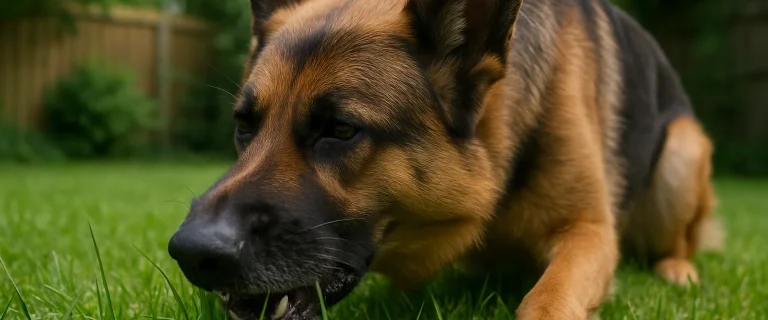Here’s the thing about signs and symptoms of stroke in dogs: they’re terribly confusing! If you recall from our post about signs of vertigo in dogs, I talked about a time my dog was experiencing vertigo and thought for sure she was having a stroke. That’s not the only time I was convinced she was stroking out. I’ve mistaken a seizure and a panic attack for signs of a stroke! All three times, it was something completely different, yet the symptoms scared me enough to rush her to the vet.
So just how would you know if your dog had a stroke? Let’s look at the signs and talk a bit about what to do. Although I’ll tell you right now, if you even think your dog is having a stroke, call your vet!
Signs and Symptoms of Stroke in Dogs
Some signs are subtle and hard to notice if you do not know what to look for. The most common signs of a canine stroke are walking in circles or turning the wrong way when called, head tilted to one side, difficulty with balance and standing, extreme lethargy, and loss of control over bladder and bowels and vomiting. Some of the worsening symptoms can include loss of eyesight, heart arrhythmia, and the dog could collapse.
If you look at those signs of stroke in dogs, you’ll notice that they’re also symptoms of other issues. A dog suffering from vertigo will exhibit MANY of the above signs. Dogs having a seizure also show similar signs, especially the head tilting and balance issues.
What You Should Do
If you think your dog has had a stroke, you should look inside their mouth for dark red gums or check their inner eyelids to see red hair. If any of this happens, you should take your pet to the veterinarian immediately. Even if you notice other symptoms of a stroke, it’s best to seek medical attention right away. Just don’t panic, because as I said, they can also be signs of far more benign health issues.
Causes and Types of Strokes in Dogs
Strokes can be fatal to dogs, but if you can catch it before anything becomes worse, you can get them treated immediately and will have a greater chance of survival. Some of the most common causes include head injury, heart disease, diabetes, kidney disease, brain tumors, and spotted fever. It is said that elderly dogs are more prone to strokes then young active dogs.
The two most common strokes found in dogs are called Cerebrovascular Accidents (CVA) and Transient Ischemic Attacks (TIA). They cut off the oxygen to the brain and slow down or blot the blood flow. Both are severe conditions and will need treatment right away. There is another type of stroke found in the dog that is very common is called Fibrocartilaginous Embolism (FCE) and what happens is a small piece of disc material inside the back breaks off and drifts into the spinal cord. It occurs quickly when a dog is playing or jumping or running. Once again it is best to get your dog looked over if they are acting strangely.
Bottom line (and I know we repeat this often, but it’s SO important), if you suspect your dog is having a stroke, get immediate medical attention. I keep the number of an emergency vet clinic on hand in case my regular vet is closed or booked solid.



